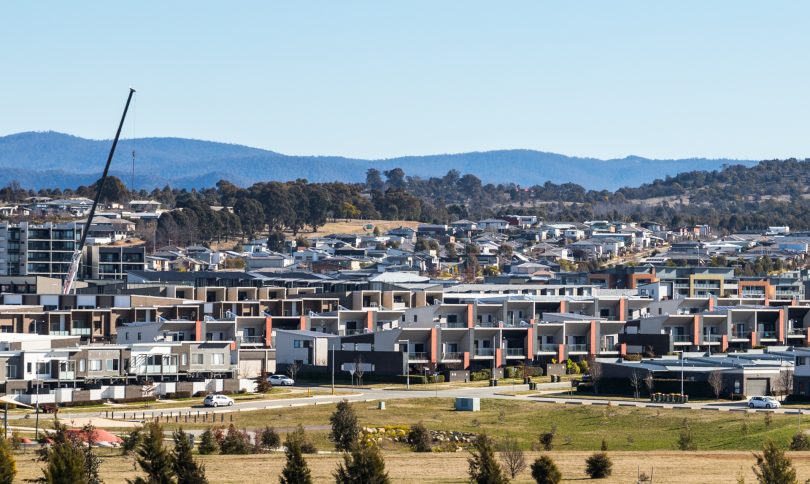
The Canberra Liberals say the government is to blame for the housing crisis in the ACT because it’s not releasing enough land. Photo: Michelle Kroll.
Critics say the ACT Government is to blame for the housing affordability problem because it’s not releasing enough land.
It’s a point raised as regularly by one side of politics as it is refuted by the other. But the housing industry argues while there’s some truth to it, nothing is black and white.
In annual report hearings earlier this week, Canberra Liberals spokesperson for planning Peter Cain illustrated the argument that there is not enough land with the example of a recent ballot for land in the new suburb of Macnamara where 12,300 registrations were received for only 71 blocks of land.
Mr Cain argued the speed at which the government supplies new land impacts the ACT’s “skyrocketing median house price”.
But Chief Minister Andrew Barr flatly rejected the assumption of his claim, arguing the release of new land constitutes less than 2 per cent of the total housing market, so it could not possibly affect the price of houses in established suburbs in inner Canberra or even Belconnen.
However, the executive director of the Housing Industry Association (HIA) in the ACT, Greg Weller, said both arguments have “elements of truth to them”.
While Mr Weller acknowledged new homes are only a small part of the market – as Mr Barr argued – he doesn’t believe the government is distributing land in a way that is helping to control accelerating prices.
He described their current method of ballots as ‘drip-feeding’ land.
“[We have] a situation in which a lot of people are chasing a small number of blocks and that invariably puts price pressure onto new homes … making it more expensive and less attractive to build a new home,” he explained.
In turn, Mr Weller said this does lead to it being more attractive to purchase an existing home in an established suburb as their value is driven up.
Mr Weller would prefer it if blocks of land were available to buy over the counter – but only for genuine home buyers, not for people holding them purely for speculative purposes.
But Mr Weller admits the situation is extraordinarily complex and releasing more land immediately would cause short-term problems because of the major supply issues facing the construction industry.
Recent wet weather is also unlikely to help. “There’s no silver bullet and rules have to be changed.”
Every senior ACT Government Minister can be heard making the point that all Australian jurisdictions are grappling with a housing affordability crisis and the ACT is not immune.
Mr Barr has argued current federal tax settings, as well as the current record-low interest rates, are favouring investment in real estate and with on-average bigger houses and larger blocks than the rest of Australia, it’s no wonder houses in the ACT are more expensive than the rest of the country’s.
“In the end, the price of a house is the interaction of supply and demand. The worth of a house is how much a person is willing to pay for it,” Mr Barr said.
“That is not within the ACT Government’s control.”
However, Mr Cain and Mr Weller point out that what is its control is the release of land.
Both argue against the current policy under which the government is focused on infill as 70 per cent of all new homes rather than greenfield development (30 per cent) – a promise made largely to satisfy the Greens.
Mr Weller said if enough land was available for people to buy, a significant number of housing problems would be solved and that, ultimately, more land will have to be released.
He also pointed to increasing medium-density housing in the suburbs and changing planning laws to allow more subdivisions in developed suburbs as key levers the government can pull to ease the pressure on the market.
Original Article published by Lottie Twyford on Riotact.









